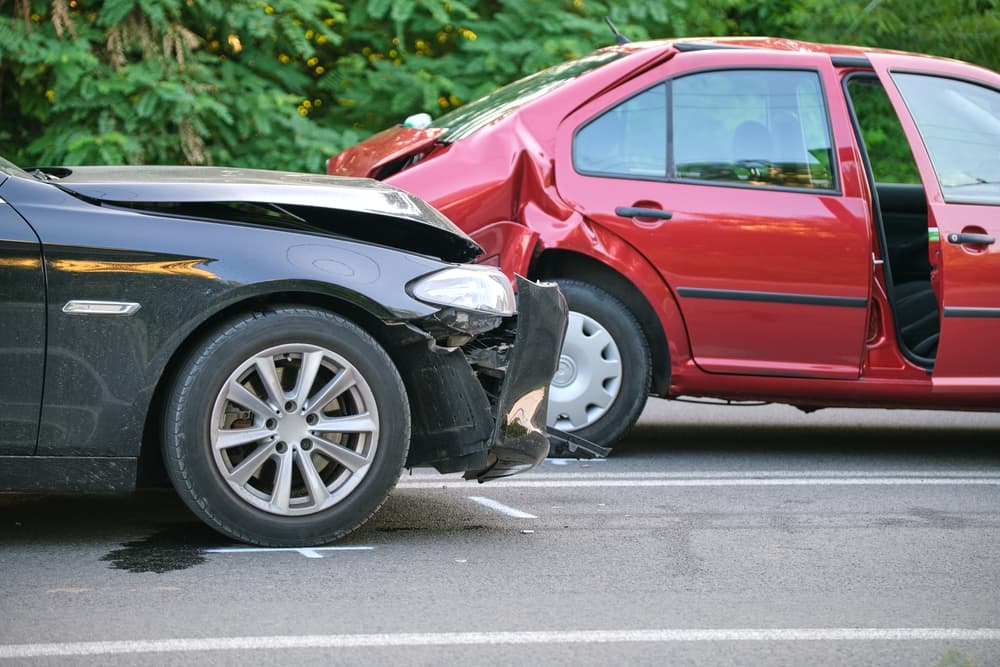
Some common types of car accidents include sideswipe accidents, head-on accidents, rear-end accidents, T-bone accidents, and rollover accidents. When a motor vehicle hits someone who is walking or jogging, it is called a pedestrian accident.
Another way to classify car accidents is by whether or not they result in injuries. When car accidents cause victims to suffer non-fatal or fatal injuries, those affected by the accident can seek compensation by hiring a car accident attorney.
Your lawyer will oversee the claims process and any lawsuit you need to file, protecting and advising you along the way.
Who Is at Fault for Various Types of Car Accidents?
Each accident involves different circumstances, and you cannot determine (for certain) who is liable unless you have all relevant information. That said, you may gain a basic understanding of liability by understanding why common types of car accidents happen.
Head-On Accidents
The most dangerous type of accident, head-on collisions, often bring vehicles traveling fast to a sudden stop.
When vehicles collide in this manner, the occupant’s momentum continues forward when the vehicle’s momentum stops. It can cause a violent force on the body, potentially causing whiplash, fractures, damage to internal organs, and other serious injuries.
A head-on car accident suggests that someone made a substantial error or that a vehicle defect caused a motorist to lose control of their car. Further investigation is necessary to determine who is at fault.
Rear-End Accidents
When a motorist hits another vehicle in the rear, it can suggest that:
- The motorist behind was speeding.
- The motorist behind was not maintaining a safe distance from the vehicle in front.
- A defect in the following vehicle (like blown brakes) prevented the motorist from stopping before a collision occurred.
A rear-end accident often happens because the motorist fails to maintain sufficient distance from the vehicle in front of them. This is why the motorist who hits another vehicle in the rear is usually at fault for rear-end accidents.
T-Bone (or Side-Impact) Accidents
A T-bone accident is when a vehicle strikes another in the side, with the colliding vehicles forming a sort of T formation. It is also known as a side-impact collision.
These collisions can happen when:
- A motorist runs a red light
- A motorist runs a stop sign
- A motorist is speeding and cannot brake to prevent a collision
- A motorist disobeys or does not understand the right of way
Often, T-bone collisions happen when a motorist knowingly breaks the law or does not understand the traffic laws. For instance, if a motorist turns left on a green light into the path of another vehicle crossing the intersection, the motorist who turned (without the right of way) is likely at fault for the accident.
Sideswipe Accidents
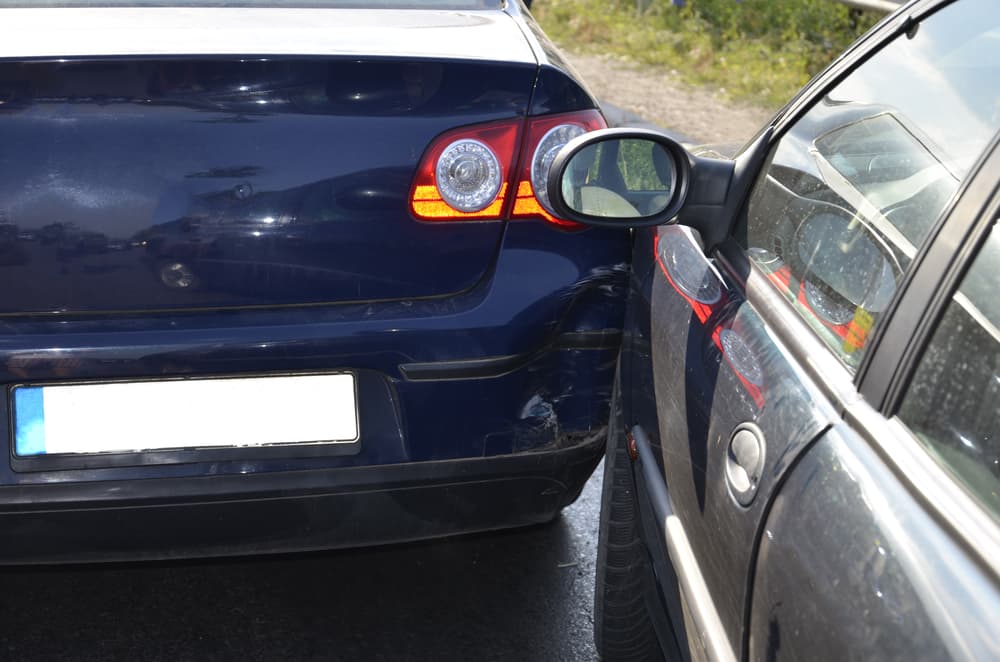
When vehicles collide almost parallel, such as when one merges into another and scrapes the side of the vehicle, this is called a sideswipe accident. These accidents may be among the lowest-impact collisions but can still result in injuries.
As with most accidents, sideswipe collisions usually happen because a motorist did something wrong. If a driver fails to check their blind spot, for example, they may merge into a lane occupied by another vehicle, causing the two vehicles to scrape.
Vehicle defects can also lead to sideswipe accidents, in which a manufacturer might be liable for victims’ damages.
Pedestrian Accidents
Though many consider pedestrian accidents distinct from car accidents, they often involve cars.
A pedestrian accident can happen when:
- A pedestrian enters the roadway when they should not
- A motorist does not yield the right of way to a pedestrian
- A motorist is impaired
- A motorist is distracted
- A motorist is speeding and, therefore, cannot brake before hitting a pedestrian
- A motorist enters the bike lane
Roadways are complex, with endless hazards and constantly moving traffic conditions, making accidents inevitable. However, everyone involved in the transportation landscape, from vehicle manufacturers to municipalities and drivers, must take all possible measures to avoid causing an accident.
A car accident lawyer will investigate your collision and determine who is at fault for the accident and your resulting damages.
How Your Lawyer Will Prove Fault for the Accident
Insurance companies often pay claims based on who is at fault for the accident, though states implement their unique laws.
If you want to sue, you will also need to prove that someone else is at fault for the collision, and your lawyer may prove this with:
- Eyewitness accounts of how one vehicle collided with the other
- A police officer’s report detailing the accident
- Any footage from traffic cameras, security cameras, or other cameras showing the accident
- An expert’s reconstruction, which may be based on witness accounts and other relevant information
The evidence tells the story of car accident cases. Your lawyer will act quickly to gather that evidence so there is no doubt about who is financially responsible for your damages.
Proving Negligence Is a Key Step in Your Car Accident Case
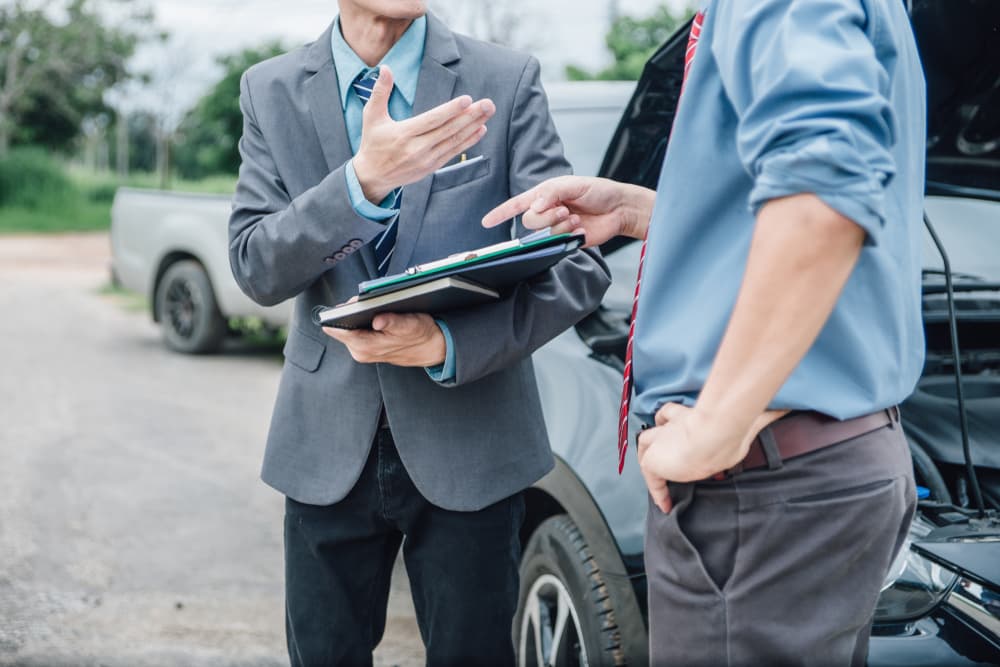
Negligence is the standard for liability in most civil cases, including car accident claims and lawsuits.
Your attorney will prove the negligence of at-fault parties by:
- Establishing that they had a duty of care to you: At least, they had a duty of care not to cause you harm. A duty of care means someone should act as a reasonable person would in the same circumstances. Those who act reasonably do not, generally speaking, cause car accidents.
- Proving the at-fault party violated their duty of care: Whether it is a speeding motorist or the manufacturer of a dangerous vehicle, your lawyer will prove that those responsible for your accident acted unreasonably.
- Showing that the at-fault party’s negligence caused the accident: If a motorist was speeding, that act alone violates the duty of care. Your lawyer will then prove that the speeding motorist hit your vehicle, which will mean proving “causation” between negligence and the collision.
- Laying out your damages: Having proven that a negligent motorist caused your accident, your lawyer will then show the damages you’ve suffered because of the accident.
Following these steps is how car accident attorneys prove that insurance companies and at-fault parties owe their clients compensation.
Why You Should Hire a Lawyer After a Car Accident
Car accident victims who don’t hire a lawyer may assume that insurance companies always operate above board. They think that, just because an insurance policy suggests they should receive fair compensation, that’s what will happen.
The truth is, insurance companies often try to pay accident victims as little compensation as possible, and you may hire a car accident lawyer to lead your claim because:
- Experienced lawyers know how to calculate the exact cost of accident-related damages.
- Car accident attorneys have plenty of experience dealing with and negotiating with insurance companies.
- Having a lawyer ensures no insurance company can get away with bad-faith tactics, such as delays, undue pressure, and lowball settlement agreements.
- Lawyers have resources, including investigators and experts, who can help build winning claims.
- Attorneys have the time and resources necessary to resolve your claim immediately.
These are just some reasons car accident victims decide to work with attorneys. By allowing a lawyer to handle your case from start to finish, you can better heal without the stress of your case intruding.
Lawyers Make It Financially Easy to Hire Them
Car accident lawyers offer a fee structure that works for you. Knowing that many accident victims are already financially stressed, and accidents make those stresses worse, attorneys:
- Don’t ask for any upfront payment from their clients
- Only receive their fee if they deliver compensation to the client
- Cover all case-related expenses, including but not limited to expert fees and filing costs
Attorneys invest significant time and effort into their clients’ claims and lawsuits. If they don’t succeed, all that effort goes uncompensated. Therefore, you can be confident that your lawyer will do what they can to secure all the compensation you deserve.
What a Lawyer Will Do for You (in Addition to Proving Fault)
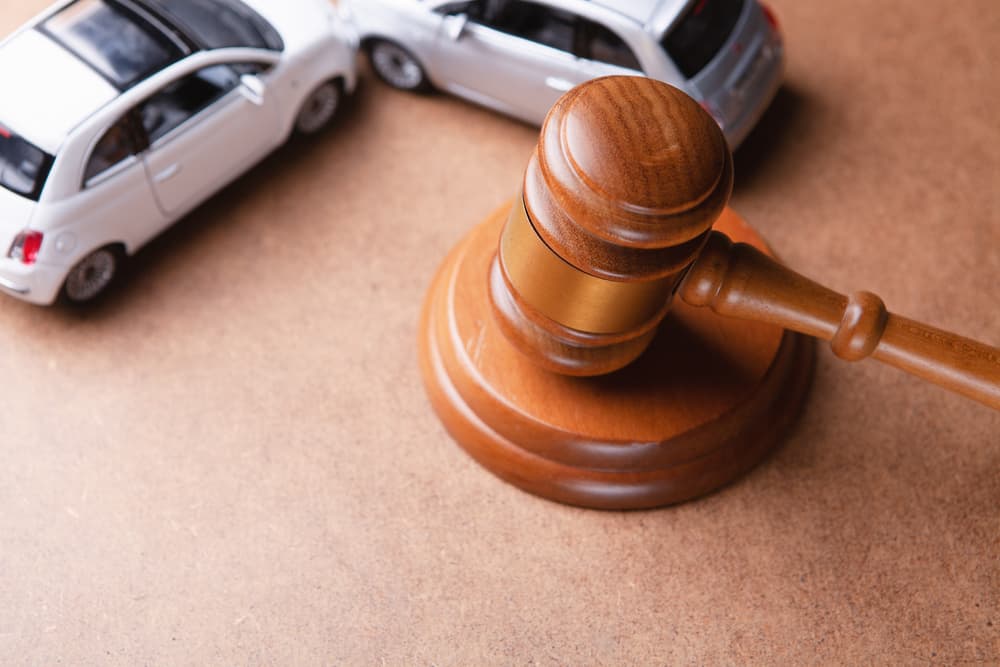
Attorneys create personalized strategies for every client. However, most car accident cases require lawyers to fulfill several essential steps, including:
Obtaining Evidence
Your lawyer will prove who caused your car accident using all available evidence. From a police report to witness accounts and video footage, your lawyer will quickly secure any evidence that bolsters your case.
Documenting the Client’s Damages
Car accidents often cause both economic damage (like medical bills) and non-economic damage (like anxiety and PTSD).
Your lawyer will obtain proof for all of your damages, which may include:
- A mental health counselor’s diagnosis of your pain and suffering
- A mechanic’s invoice for repairing your vehicle
- Your doctor’s imaging and diagnoses of your injuries
- Proof of lost income due to accident-related injuries
Your lawyer will prove in great detail the harm resulting from the liable party’s negligence.
Calculating a Case Value
One of the most challenging parts of handling your own case is figuring out exactly how much compensation you deserve. Lawyers have the training and resources to calculate your damages accurately and efficiently, including the cost of non-economic damages like pain and suffering.
Negotiating with Insurers
Once your lawyer has established your case value, they will negotiate a settlement with liable insurance companies.
This may include:
- Your insurance provider
- The insurance provider for the at-fault party
Your attorney will review all applicable insurance policies, identifying relevant details like coverage limits. Ultimately, your lawyer will seek compensation for all of your accident-related damages.
Filing a Lawsuit if the Client Decides To
You may need to file a lawsuit against liable parties for several reasons, including if:
- At-fault parties don’t have insurance but have enough resources to be worth suing
- One or more insurance companies deny your claim
- Liable insurance companies will not meet your attorneys’ settlement demands
- Other circumstances lead you to decide that suing is the best course of action
Know that suing becomes a viable option when you hire a lawyer. Your lawyer will contact you when they receive settlement offers, and they will advise you about whether filing a lawsuit is the proper move.
Going to Trial If Liable Parties Don’t Offer a Fair Settlement
Your car accident lawyer may continue to negotiate with liable parties after they have filed a lawsuit. They may still not receive a fair offer, so your case may then go to trial.
While lawyers can resolve most cases through settlements, particularly high-value cases or those with challenging negotiations, can end up in court. This is why you should look for an attorney with an established record of winning cases at trial.
Damages Your Lawyer Will Include in Their Settlement Demands
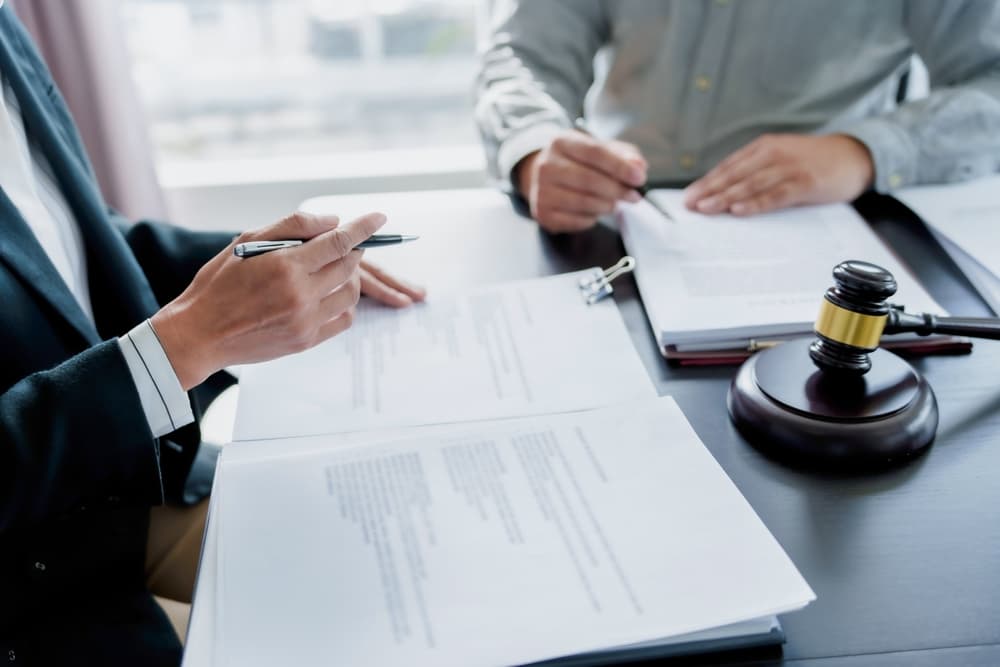
The goal of every car accident claim and lawsuit is simple: Obtain compensation covering all of your losses or damages. Therefore, your lawyer will become well-acquainted with your damages, which may include the following:
Pain and Suffering
Post-traumatic stress disorder affects a significant percentage of car accident victims.
In addition to PTSD, you may face:
- Short- and long-term pain
- Depression
- Anxiety
- Sleep issues
- Lost quality of life
- Scarring and other types of disfigurement
You may also face the cost of treatment for pain and suffering. Your lawyer will seek compensation covering pain and suffering and treatment.
Vehicle Damage
You should receive compensation to pay for the repair or replacement of your vehicle, as well as temporary transportation. Your lawyer will work to ensure you receive such compensation.
Professional Losses
Professional damages for a car accident victim can include lost income, diminished earning power, lost bonuses, and other performance-related pay opportunities.
Medical Expenses
Your attorney will include all accident-related medical bills in their settlement demands to insurance companies. If you sue, your lawyer will ask a jury to award you fair compensation for your recoverable damages.
Hire Your Car Accident Attorney as Soon as Possible
If you miss the filing deadline for your case, you may lose the ability to seek compensation for your accident-related damages. Please make sure to hire your personal injury lawyer so they can complete your case as soon as possible.